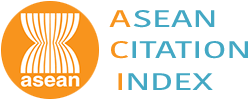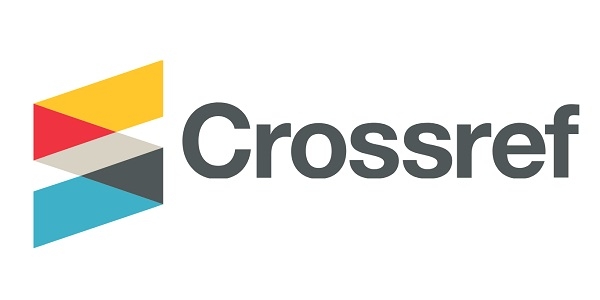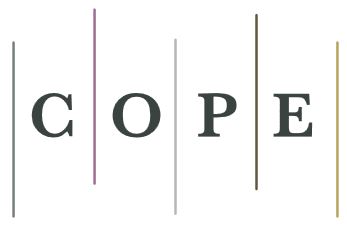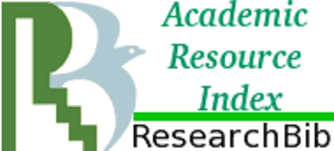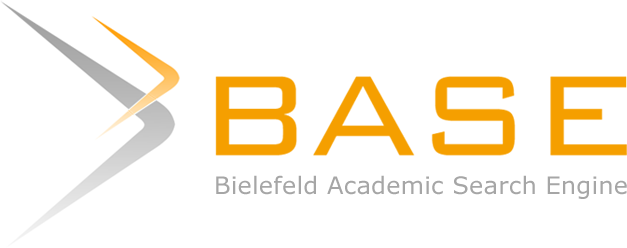Abstract
This article briefly explains the correlation between Ethiopia’s ambitious GERD project and the potential shift in power distribution in the region known as the Horn of Africa. The GERD (Grand Ethiopian Renaissance Dam) is a hydroelectric dam designed to drive economic growth by harnessing the Nile River as its core. Focusing on a regional-level analysis, this article will examine the relationship between the completion of the project and the shift in power distribution between Egypt as the local status-quo power, and Ethiopia as the regional challenger. Thus, the dramatic transition in regional structure is related to categorizing the Nile River as a finite natural resource. Using the multiple hierarchy model derived from power transition theory, this article sees that Egypt and Ethiopia view the Nile River as their primary national interest. Both countries perceive the reduced access to the river’s water as an existential threat to their sovereignty and safety. Thus, The GERD project becomes an instrument for Ethiopia to enhance its structural position as a challenger to Egyptian hegemony and gain the right to a more equitable water allocation. Thus, the completion of the project could pose a real threat not only to Egypt’s structural position but also to its survival as a state.
Bahasa Abstract
Artikel ini menjelaskan secara singkat korelasi antara proyek GERD yang ambisius di Ethiopia dan potensi perubahan distribusi kekuatan di wilayah yang dikenal sebagai Tanduk Afrika. GERD (Grand Ethiopian Rennaisance Dam) merupakan bendungan pembangkit listrik tenaga air yang dirancang untuk mendorong pertumbuhan ekonomi dengan memanfaatkan Sungai Nil sebagai intinya. Dengan berfokus pada analisis tingkat regional, artikel ini akan mengkaji hubungan antara penyelesaian proyek dan perubahan distribusi kekuatan antara Mesir sebagai kekuatan lokal status-quo, dan Ethiopia sebagai penantang regional. Dengan demikian, transisi dramatis dalam struktur regional terkait dengan pengkategorian Sungai Nil sebagai sumber daya alam yang terbatas. Menggunakan model hierarki ganda yang berasal dari teori transisi kekuatan, artikel ini melihat bahwa Mesir dan Ethiopia menganggap Sungai Nil sebagai kepentingan nasional utama mereka. Kedua negara menganggap bahwa berkurangnya akses terhadap air sungai tersebut, merupakan ancaman eksistensial terhadap kedaulatan dan keselamatan mereka masing-masing. Proyek GERD lantas menjadi instrumen Ethiopia untuk meningkatkan posisi strukturalnya sebagai penantang hegemoni Mesir, demi mendapatkan hak atas alokasi air yang lebih adil. Dengan demikian, penyelesaian proyek ini dapat menimbulkan ancaman nyata tidak hanya terhadap posisi struktural Mesir tetapi juga terhadap kelangsungan hidup Mesir sebagai sebuah negara.
References
Abdalla, A., Stellmacher, T., & Becker, M. (2023). Trends and Prospects of Change in Wheat Self-Sufficiency in Egypt. Agriculture, 13(7), 1-12.
Abdelhady, D., Aggestam, K., Andersson, D.-E., Beckman, O., Berndtsson, R., Palmgren, K. B., . . . Pilesjo, P. (2015). The Nile and the Grand Ethiopian Rennaisance Dam: is There a Meeting Point Nationalism and Hydrosolidarity. Journal of Contemporary Water Resources(155), 73-82.
Ahmed, G. K. (2024). Geopolitics of the Horn of Africa: Arab Countries’ Stance on the Grand Ethiopian Renaissance Dam, with Special Focus on the GCC Position. Asian Journal of Middle Eastern and Islamic Studies, 1-19.
Akamo, J. O. (2022). The GERD from an Ethiopian Perspective: Actors, Interests and Instruments. Istituto Affari Internazionali(22), 1-23.
Aljazeera. (2021, February 6). Sudan: Further GERD filling ‘direct threat’ to national security. Retrieved from https://www.aljazeera.com/news/2021/2/6/filling-ethiopias-dam-threatens-sudans-security-minister
Aljazeera. (2023, September 25). Second round of negotiations on Ethiopia’s mega-dam wrap up. Retrieved from Aljazeera: https://www.aljazeera.com/news/2023/9/25/second-round-of-negotiations-on-ethiopias-mega-dam-wrap-up
Attia, H., & Saleh, M. (2021). The Political Deadlock on the Grand Ethiopian Renaissance Dam. GIGA Focus Africa, 1-14.
BBC. (2015, March 23). Egypt, Ethiopia and Sudan sign deal to end Nile dispute. Retrieved from https://www.bbc.com/news/world-africa-32016763
BBC. (2021, April 22). Gerd: Sudan talks tough with Ethiopia over River Nile dam. Retrieved from https://www.bbc.com/news/world-africa-56799672
Beyenne, E. (2023). Securitisation of Cooperative Framework Agreement (CFA) and Grand Ethiopian Renaissance Dam (GERD): Dialectical Positions between Upstream and Downstream Riparian Countries. Journal of African Union Studies, 12(1), 5-21.
Cascão, A. E., & Nicol, A. (2016). GERD: new norms of cooperation in the Nile Basin? Water International, 41(4), 550-573.
Chen, H., & Swain, A. (2014). The Grand Ethiopian Renaissance Dam: Evaluating Its Sustainability Standard and Geopolitical Significance. Energy Development Frontier, 3(1), 11-19.
Deng, B. K. (2007). Cooperation Between Egypt and Sudan Over The Nile River Waters: The Challenges of Duality. African Sociological Review, 11(1), 38-62.
Egypt Independent. (2021, March 31). Video| No one will take a drop of water from Egypt, otherwise, there will be a state of unimaginable instability in the region: Sisi. Retrieved from https://www.egyptindependent.com/video-no-one-can-take-a-single-drop-of-water-from-egypt-says-sisi/
Egypt Today. (2023, September 23). New round of Ethiopian dam talks kicks off in Addis Ababa. Retrieved from Egypt Today: https://www.egypttoday.com/Article/1/127169/New-round-of-Ethiopian-dam-talks-kicks-off-in-Addis
El-Behairy, N. (2013, June 12). Ethiopia ‘frustrated’ by Egyptian statements on GERD. Retrieved from Daily News Egypt: https://www.dailynewsegypt.com/2013/06/12/ethiopia-frustrated-by-egyptian-statements-on-gerd/
El-Nashar, W. Y., & Elyamany, A. H. (2017). Managing risks of the Grand Ethiopian Renaissance Dam on Egypt. Ain Shams Engineering Journal, 1-6.
Elsanabary, M. H., & Ahmed, A. T. (2019). Impacts of Constructing the Grand Ethiopian Renaissance Dam on the Nile River. In A. M. Negm, & S. Abdel-Fattah (Eds.), Grand Ethiopian Renaissance Dam Versus Aswan High Dam (pp. 75-93). Springer.
El-Sayed, J. (2018, January 18). Desalegn: We will not harm Egyptians, GERD boost for both states. Retrieved from Egypt Today: https://www.egypttoday.com/Article/1/40406/Desalegn-We-will-not-harm-Egyptians-GERD-boost-for-both
Gebreluel, G. (2014). Ethiopia's Grand Renaissance Dam: Ending Africa's Oldest Geopolitical Rivalry. The Washington Quarterly, 37(2), 25-37.
Geda, A., & Befekadu, D. (2005). Conflict, Post-Conflict and Economic Performance in Ethiopia. In Post-Conflict Economies in Africa (pp. 125-142). London: Palgrave & Macmillan UK.
Geller, D. S. (1992). POWER TRANSITION AND CONFLICT INITIATION. CONFLICT hlANAGEhlENT AND PEACE SCIENCE, 12(1), 1-16.
Hassan, H. A., & Rasheedy, A. A. (2007). The Nile River and Egyptian Foreign Policy Interest. African Sociological Review, 11(1), 25-37.
Ilkbahar, H., & Mercan, M. H. (2023). Hydro-Hegemony, Counter-Hegemony and Neoclassical Realism on the Nile Basin: An Analysis of Egypt’s Response to the Grand Ethiopian Renaissance Dam (GERD). Journal of Asian and African Studies, 00(0), 1-16.
IRENA. (2023). Energy Profile: Ethiopia. Masdar City: International Renewable Agency (IRENA).
Jemal, N. (2013, June 22). Sudan: Pres. Omar Al-Bashir Backs Ethiopia's Dam. Retrieved from allafrica: https://allafrica.com/stories/201306220103.html
Kaledzi, I. (2023, September 13). How could Ethiopia's dam dispute escalate? Retrieved from DW: https://www.dw.com/en/how-could-ethiopias-dam-dispute-escalate/a-66798628
Kandil, A. M. (2021, April 10). Pictures: Egyptian, Burundian army chiefs of staff sign military cooperation protocol. Retrieved from Egypt Today: https://www.egypttoday.com/Article/1/100734/Pictures-Egyptian-Burundian-army-chiefs-of-staff-sign-military-cooperation
Kim, W., & Gates, S. (2015). Power transition theory and the rise of China. International Area Studies Review, 18(3), 219-226.
Kubwa, M. (2023, December 21). Grand Ethiopian Renaissance Dam (GERD) 94% Complete; Last Concrete to be Poured in September 2024. Retrieved from Constructionreview: https://constructionreviewonline.com/construction-news/grand-ethiopian-renaissance-dam-gerd-94-complete-last-concrete-to-be-poured-in-september-2024/
Kugler, J., & Organski, A. (1989). The Power Transition: A Retrospective and Prospective Evaluation. In Handbook of War Studies. Boston: Unwin Hyman.
Kuik, C.-C. (2008). The Essence of Hedging: Malaysia and Singapore's Response to a Rising China. Contemporary Southeast Asia, 30(2), 159-185. doi:10.1355/Cs30-2a
Lemke, D. (2009). Regions of War and Peace. Cambridge: Cambridge University Press.
Maher, A. (2013, June 4). Egyptian politicians caught in on-air Ethiopia dam gaffe. Retrieved from BBC: https://www.bbc.com/news/world-africa-22771563
Mbaku, J. M. (2022). The Grand Ethiopian Renaissance Dam and the Nile Basin. Georgetown Journal of International Affairs, 23(1), 84-91.
Menga, F. (2017). Hydropolis: Reinterpreting the polis in water politics. Political Geography, 60, 100-109.
Ministry of Public Works. (1950). Nile Water Agreement 1929. Cairo: Cairo Goverment Press.
Mulat, A. G., & Moges, S. A. (2014). Assessment of the Impact of the Grand Ethiopian Rennaisance Dam on the Performance of the High Aswan Dam. Journal of Water Resource and Protection, 6, 583-598.
Neumann, W. L. (2014). Social Research Methods: Qualitative and Quantitative Approaches (7th ed.). Essex: Pearson Education Limited.
Organski, A. (1968). World Politics (2nd ed.). (A. A. Knopf, Ed.) New York: University of Michigan.
Otinov, D. (2023). Wavering Sudan as Key to Resolving the Grand Ethiopian Renaissance Dam Conflict. Journal of Asian and African Studies, 58(7), 1222-1236.
Pemunta, N. V., Ngo, N. V., Djomo, C. R., Mutola, S., Seember, J. A., Mbong, G. A., & Forkim, E. A. (2021). The Grand Ethiopian Renaissance Dam, Egyptian National Security, and human and food security in the Nile River Basin. Cogent Social Sciences, 7(1), 1-18.
Salman, S. M. (2012). The Nile Basin Cooperative Framework Agreement: a peacefully unfolding African spring. Water international, 1-13.
Schweller, R. L. (1994). Bandwagoning for Profit: Bringing the Revisionist State Back In. International Security, 19(1), 72-107.
Siraw, D. D. (2023). EXPLORING THE NILE WATER DISCOURSE IN ETHIOPIA AND EGYPT: SECURITIZATION OR DEVELOPMENTAL? Journal of Public Administration, Finance and Law(27), 418-428.
Swain, A. (1997). Ethiopia, the Sudan, and Egypt: The Nile River Dispute. The Journal of Modern African Studies, 35(4), 675-694.
Tabikha, K. (2023, September 10). Ethiopia completes final filling of dam after failed Cairo talks. Retrieved from The National News: https://www.thenationalnews.com/mena/egypt/2023/09/10/ethiopia-completes-final-filling-of-gerd-dam-after-failed-cairo-talks/
Tadesse, F., & Cohen, M. (2023, September 25). Why Ethiopia’s $5 Billion Nile Dam Has Riled Its Neighbors. Retrieved from The Washington Post: https://www.washingtonpost.com/business/energy/2023/09/25/why-ethiopia-s-5-billion-dam-has-riled-its-neighbors-explainer/199c9b1e-5ba9-11ee-b961-94e18b27be28_story.html
Tawil, N. E. (2019, September 26). GERD status quo will not be forced on Egypt: Sisi. Retrieved from Egypt Today: https://www.egypttoday.com/Article/1/75240/GERD-status-quo-will-not-be-forced-on-Egypt-Sisi
The Ministry of Water Resources and Irrigation. (2005). Integrated Water Resources Management Plan. The Arab Republic of Egypt.
Tsega, A. H. (2017). The Geopolitics of Water Negotiations Succeeding the GERD Project in the Nile River Basin: The Case of Ethiopia, Egypt, and Sudan. INSAMER, 34, 1-11.
Turhan, Y. (2020). The hydro-political dilemma in Africa water geopolitics: The case of Nile River Basin. African Security Review, 1-20.
UN News. (2020, July 6). Water cooperation between States ‘key’ to Blue Nile dam project. Retrieved from United Nations: https://www.un.org/africarenewal/news/water-cooperation-between-states-%E2%80%98key%E2%80%99-blue-nile-dam-project
United Nations. (1959, November 8). Agreement (with annexes) for the full utilization of the Nile. Retrieved from https://treaties.un.org/doc/Publication/UNTS/Volume%20453/volume-453-I-6519-English.pdf
United States Census Bureau. (2023, July 1). Egypt. Retrieved from United States Census Bureau: https://www.census.gov/popclock/world/eg
USAID. (2023). Agriculture and Food Security - Egypt. Retrieved from USAID: From the American People: https://www.usaid.gov/egypt/agriculture-and-food-security
USDA. (2022). Grain and Feed Annual Import Challenges and High Prices Reduces Egypt’s Wheat and Corn Imports. United States Department of Agriculture: Foreign Agricultural Service.
Walt, S. M. (1985). Alliance Formation and the Balance of World Power. International Security, 9(4), 3-43.
WFP. (2021, June 1). The Government of Sudan, FAO and WFP call for investment in Sudan's agriculture as number of people facing acute food insecurity reaches record high. Retrieved from World Food Programme: https://www.wfp.org/news/government-sudan-fao-and-wfp-call-investment-sudans-agriculture-number-people-facing-acute#:~:text=Agriculture%20employs%2043%20percent%20of%20Sudan%E2%80%99s%20labour%20force,the%20livelihoods%20of%20at%20least%2026%20million%20p
Wheeler, K. G., Basheer, M., Mekonnen, Z. T., Eltoum, S. O., Mersha, A., Abdo, G. M., . . . Dadson, S. J. (2016). Cooperative filling approaches for the Grand Ethiopian Rennaisance Dam. Water International, 41(4), 611-634.
Wheeler, K. G., Jeuland, M., Hall, J. W., Zagona, E., & Whittington, D. (2020). Understanding and managing new risks on the Nile with the Grand Ethiopian Renaissance Dam. Nature Communications, 11(5), 1-9.
World Bank. (2022). Population, total - Egypt, Arab Rep. Retrieved from The World Bank : https://data.worldbank.org/indicator/SP.POP.TOTL?locations=EG
World Bank. (2023). Access to Electricity (% of Population) - Ethiopia. Retrieved from The World Bank: https://data.worldbank.org/indicator/EG.ELC.ACCS.ZS?locations=ET&name_desc=true
Yihdego, Y., Khalil, A., & Salem, H. S. (2017). Nile River’s Basin Dispute: Perspectives of the Grand Ethiopian Renaissance Dam (GERD). Global Journal of Environmental Science and Management, 17(2), 1-22.
Yilmaz, S., & Xiangyu, W. (2019). Power Transition Theory Revisited: When Rising China Meets Dissatisfied United States. China Quarterly of International Strategic Studies, 5(3), 317-341.
Recommended Citation
Ramadhan, Muhammad Fauzan Rizki
(2024)
"THE GRAND ETHIOPIAN RENAISSANCE DAM AND THE SHIFTING BALANCE OF POWER IN THE HORN OF AFRICA,"
Global: Jurnal Politik Internasional: Vol. 26:
No.
2, Pp. 1-24.
DOI: 10.7454/global.v26i2.1327
Available at:
https://scholarhub.ui.ac.id/global/vol26/iss2/1



